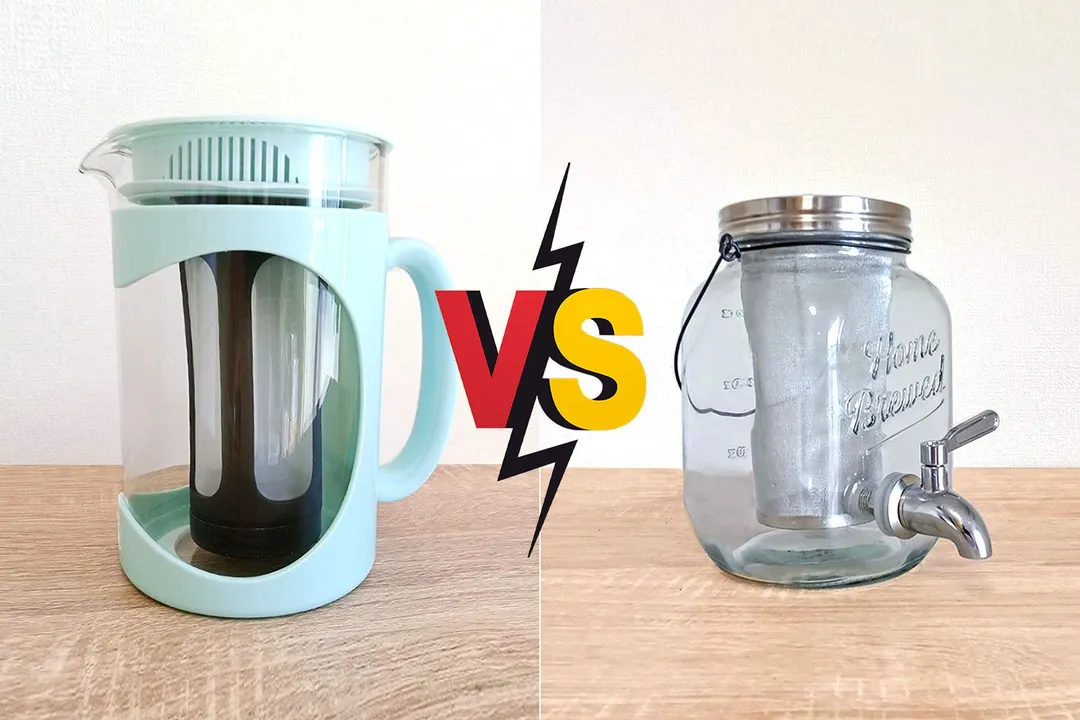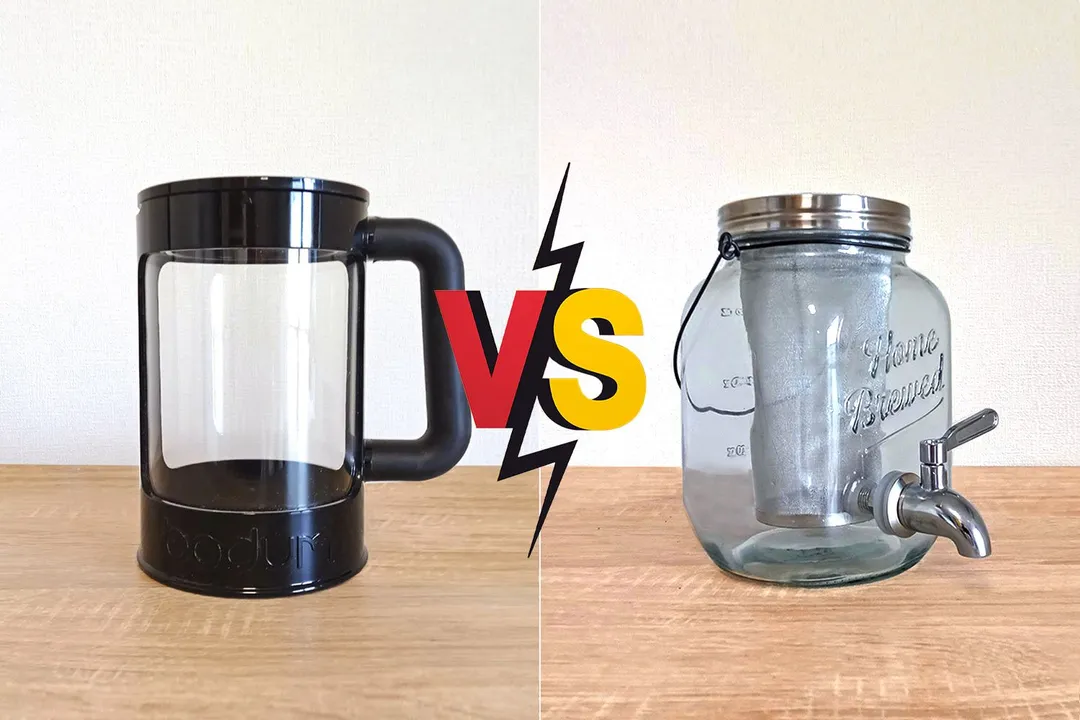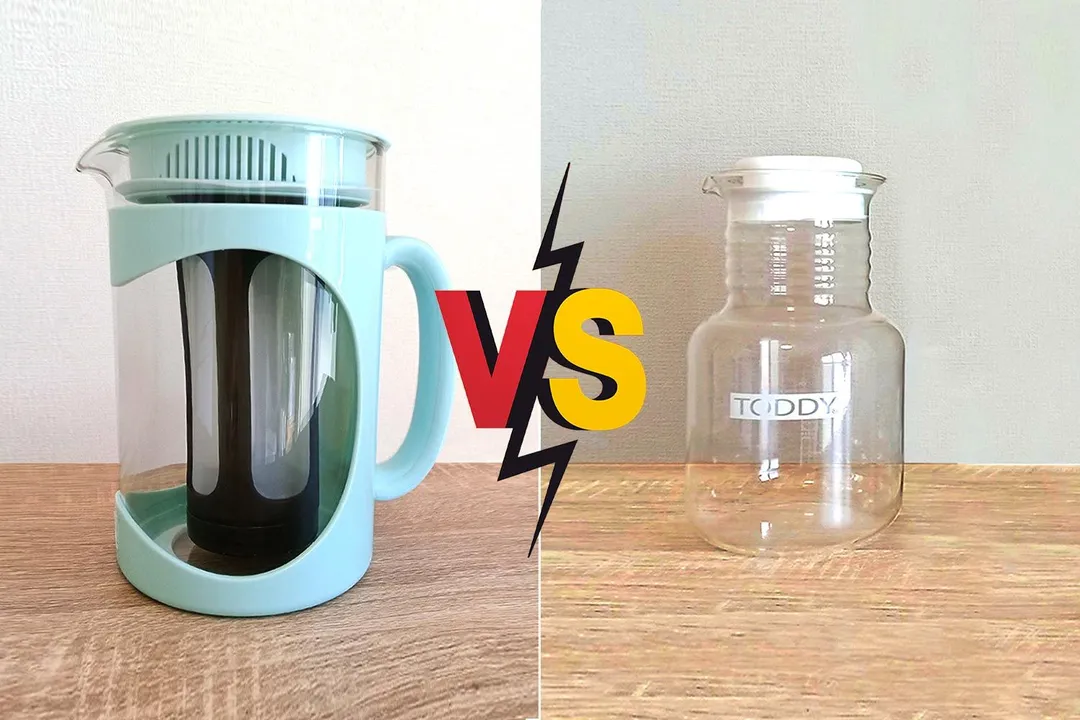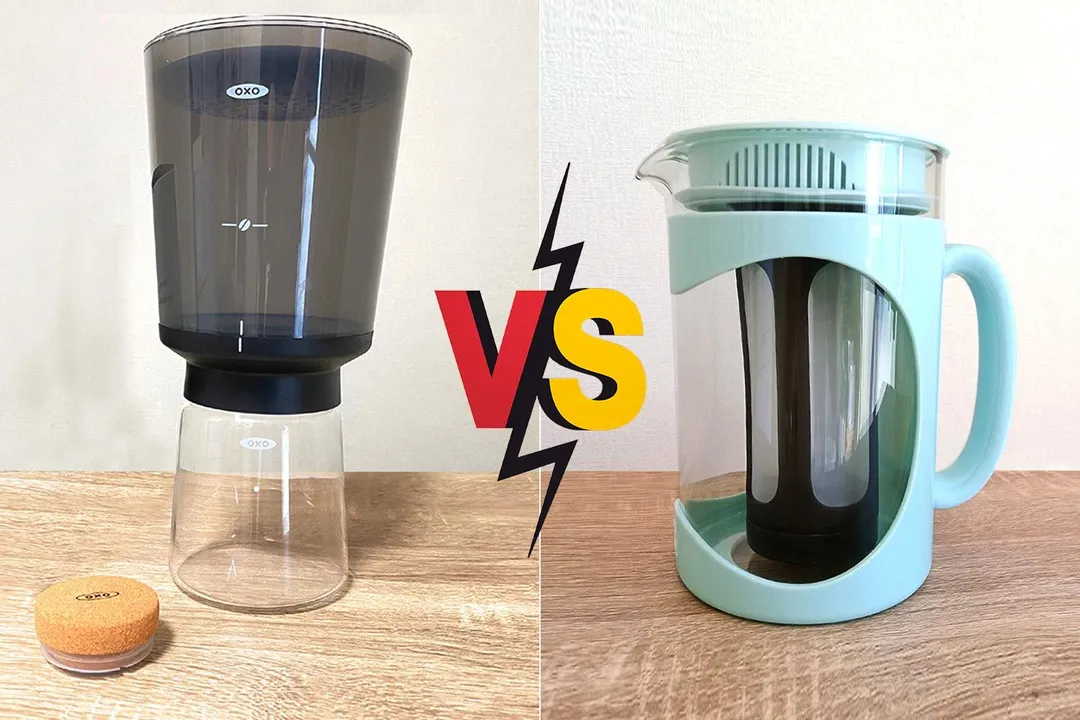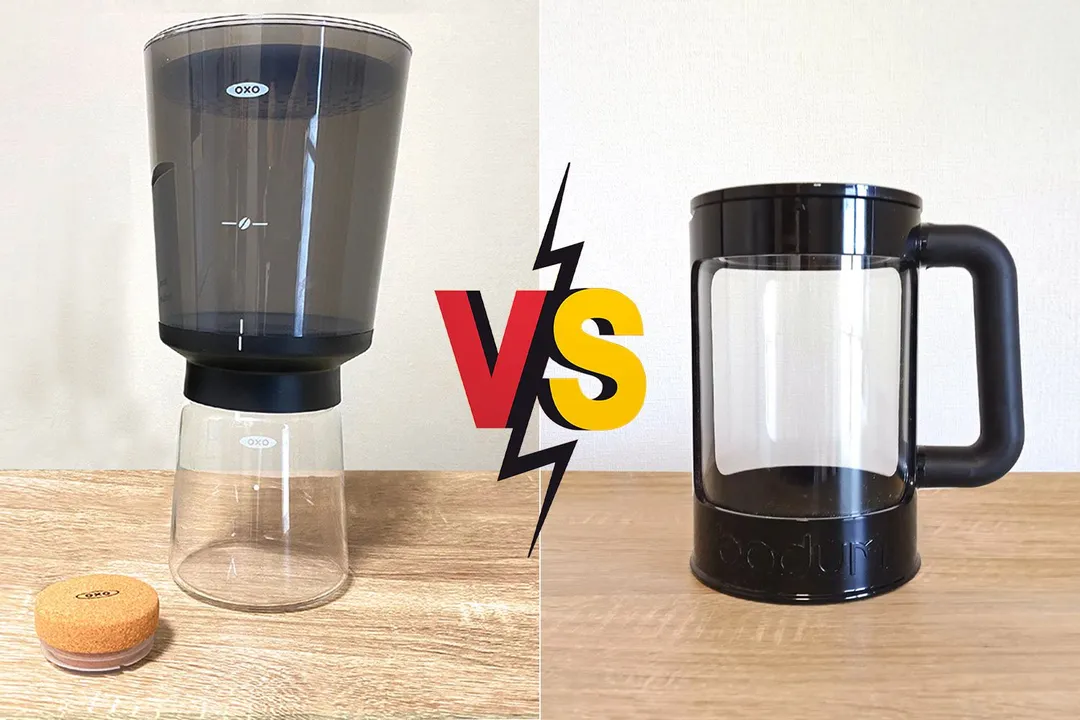Our recommendations are made independently through Research & Testing. We may receive commissions from purchases made via our links.
Primula Burke vs Bodum Side-by-Side Comparison
Primula Burke cold brew coffee maker vs Bodum French press. Two brewers that look very similar, but produce very different results.
Primula Burke Deluxe
Tested Using Methodology v1.0Bodum
Tested Using Methodology v1.0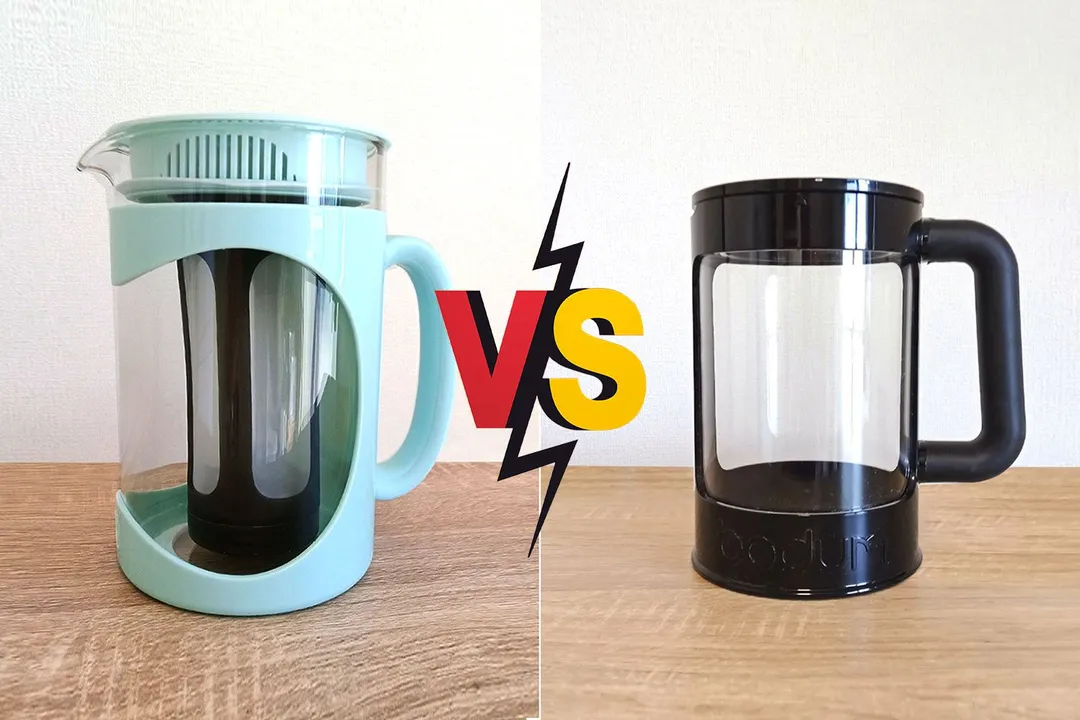
Overall Verdict
The Primula Burke and Bodum are similar in their shape, size, and colored jacket design. The Burke is a glass jug-type carafe with a plastic and nylon filter, while the Bodum has an all-plastic body with a metal and stainless steel plunge filter.
The Bodum is a freestyle brewer meaning you can adjust the brew ratio and brew volume as desired. After brewing, you replace the simple brew lid with a plunge-filter lid.
Both brewers produce a finely-filtered brew. The Bodum produces a full-strength cold brew concentrate, whereas the Burke is not a brewer we recommend due to its weak and insubstantial brew.
Pros & Cons
- Detachable filter base
- Protective plastic jacket
- Lid design
- Easy to clean
- Thick glass
- Light and durable
- Open/close spout
- Perfectly airtight
- Comfortable handle
- Freestyle brewing
- Made in Portugal
- No measurement markings
- A little heavy
- Weak brew strength
- Decanting can be tricky
- No measuring guides
Key Specs
Where to Buy
*You help support HealthyKitchen101's product testing and reviews by purchasing from our retail partners.
Analysis and Test Results
Brew Quality
Bouquet
Drinkability


Sediment
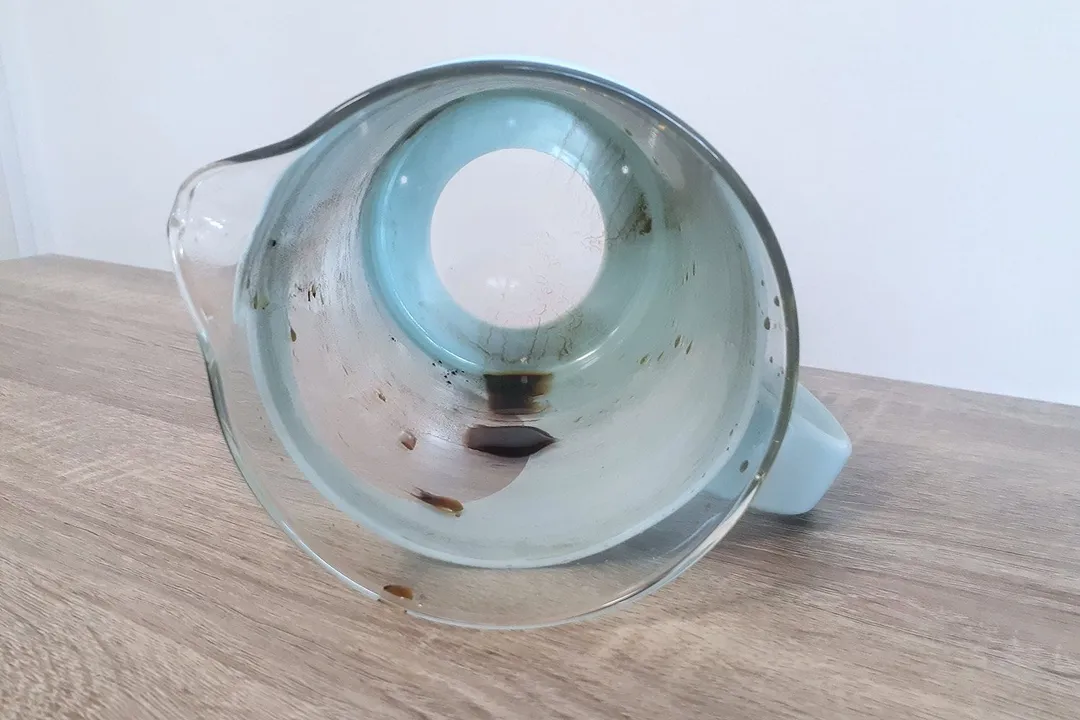
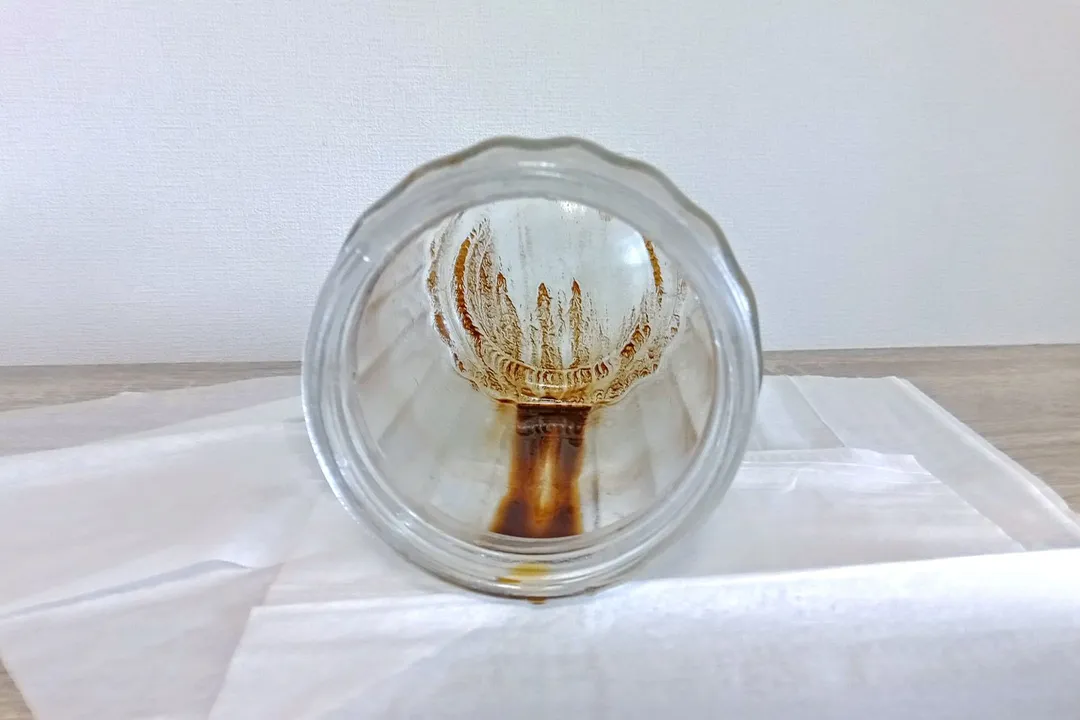
Design
In the Box

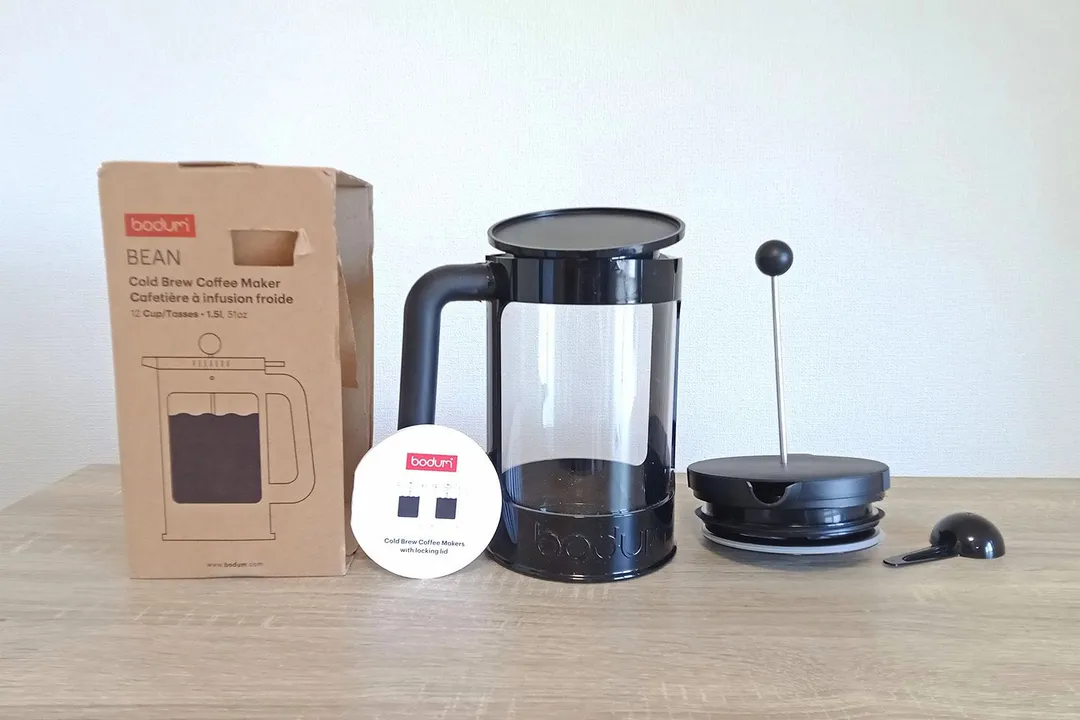
Decanter
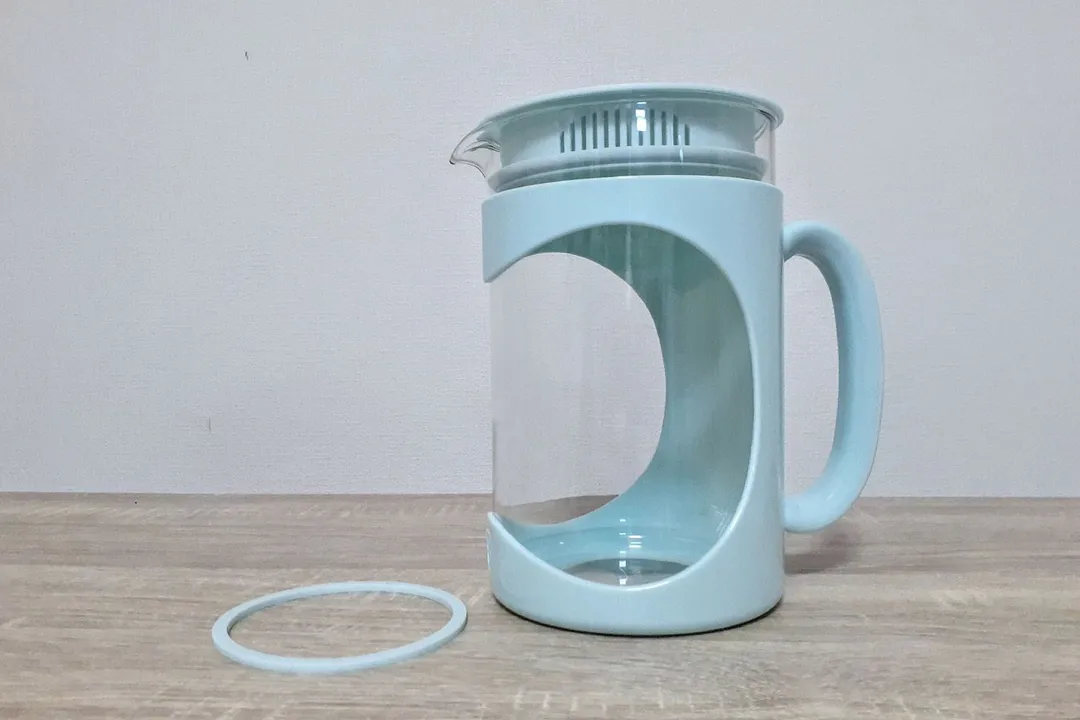
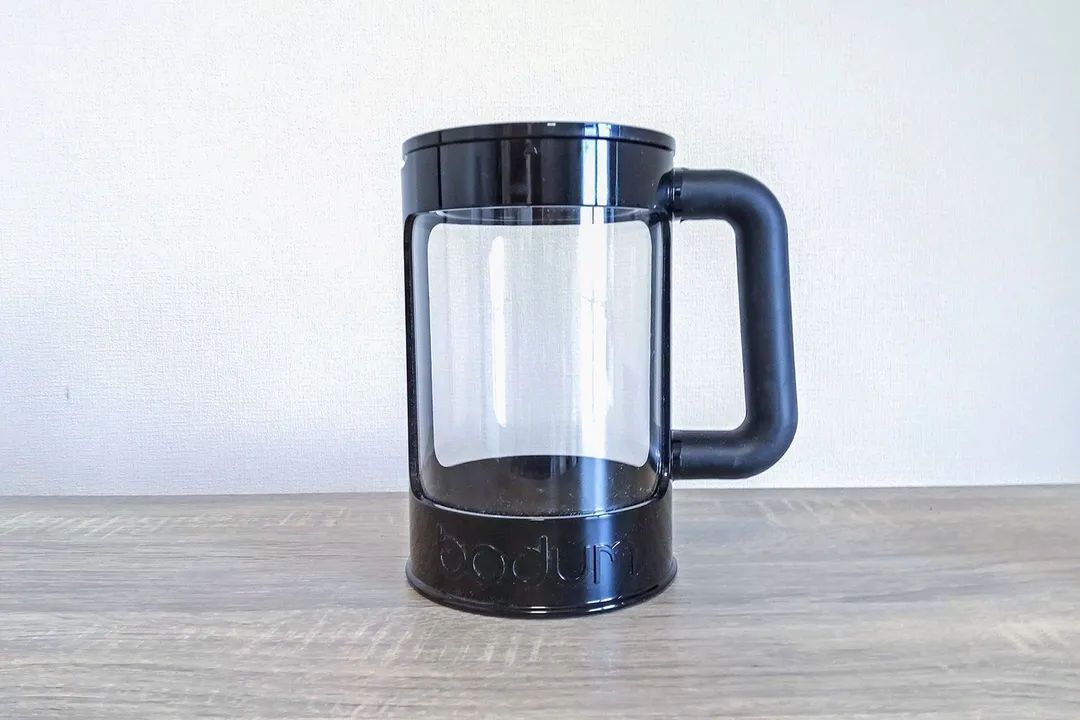
Stopper / Lid
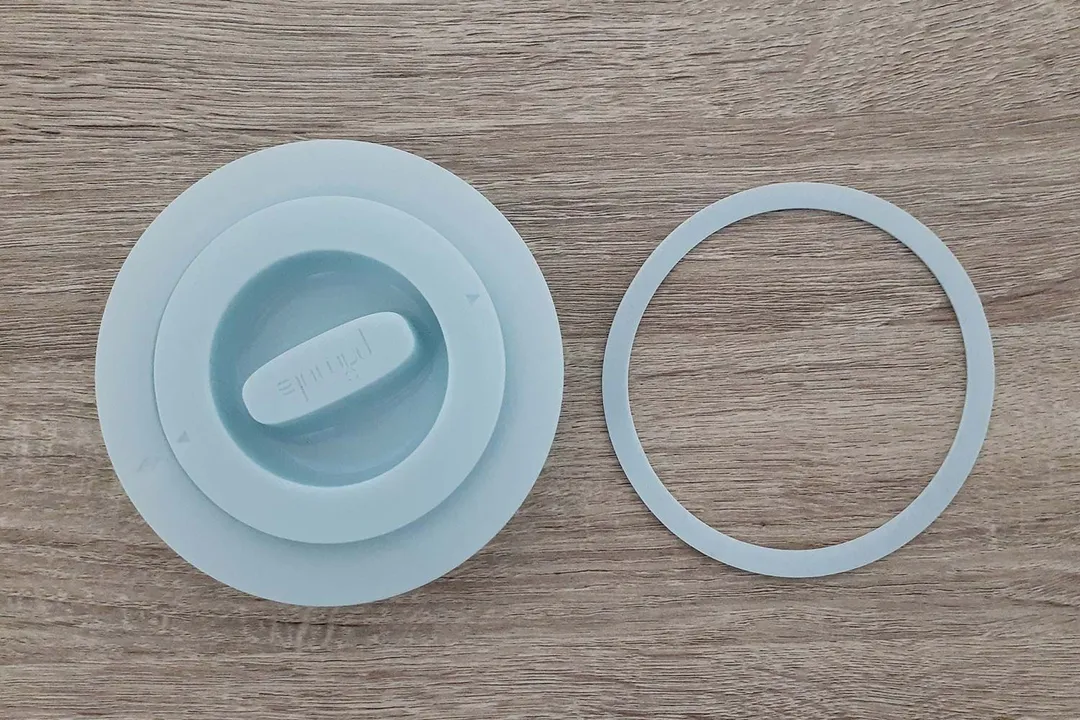
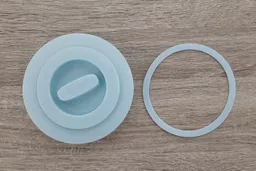

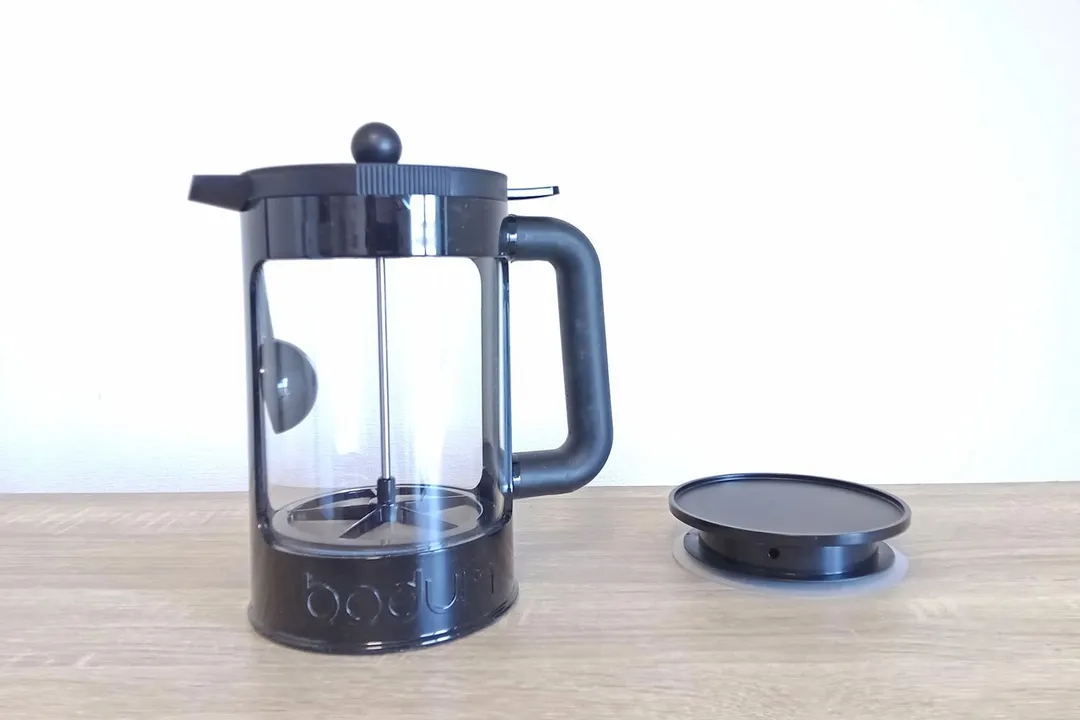

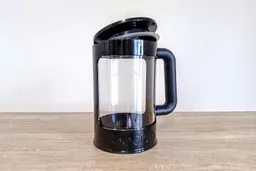
Filter
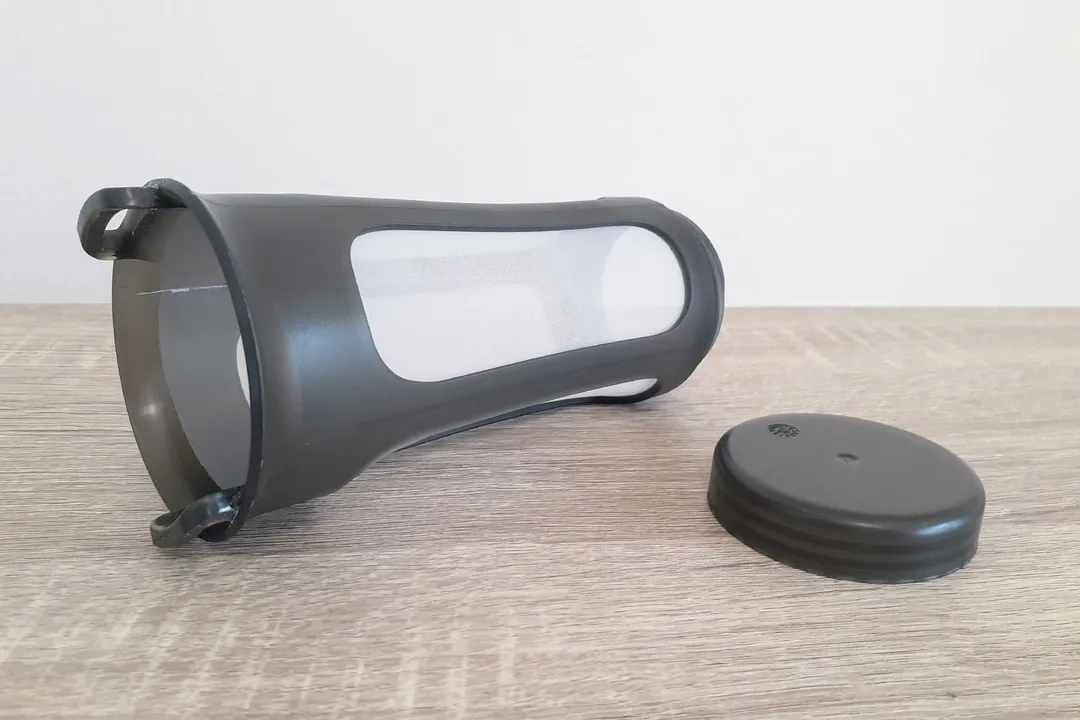
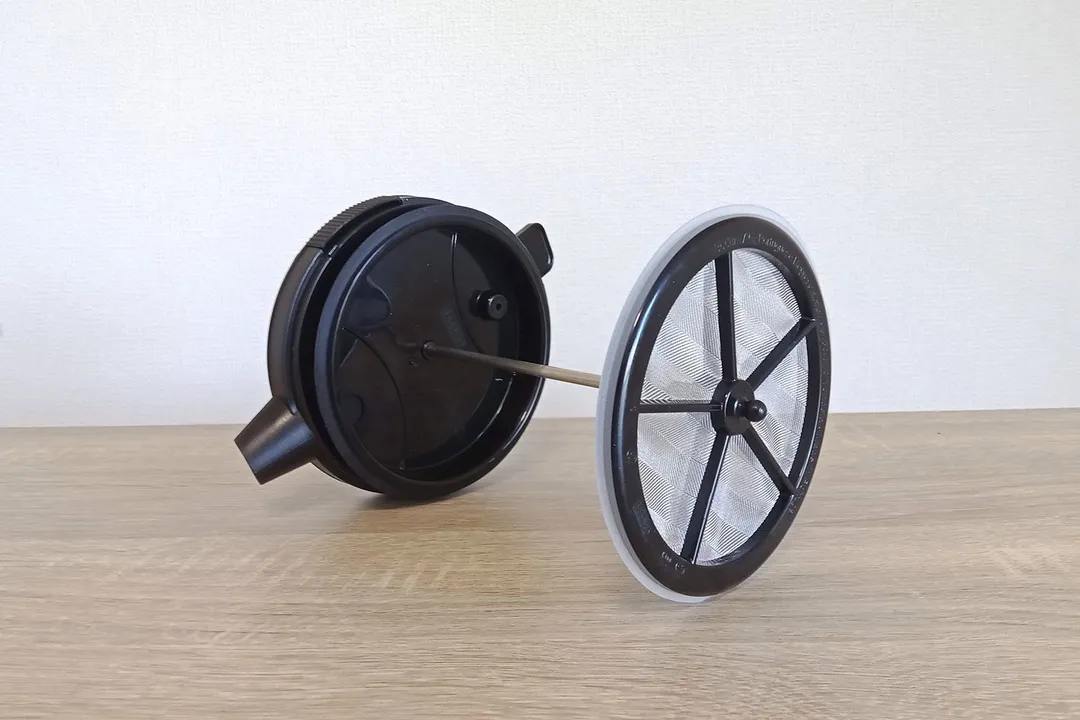
Build Quality

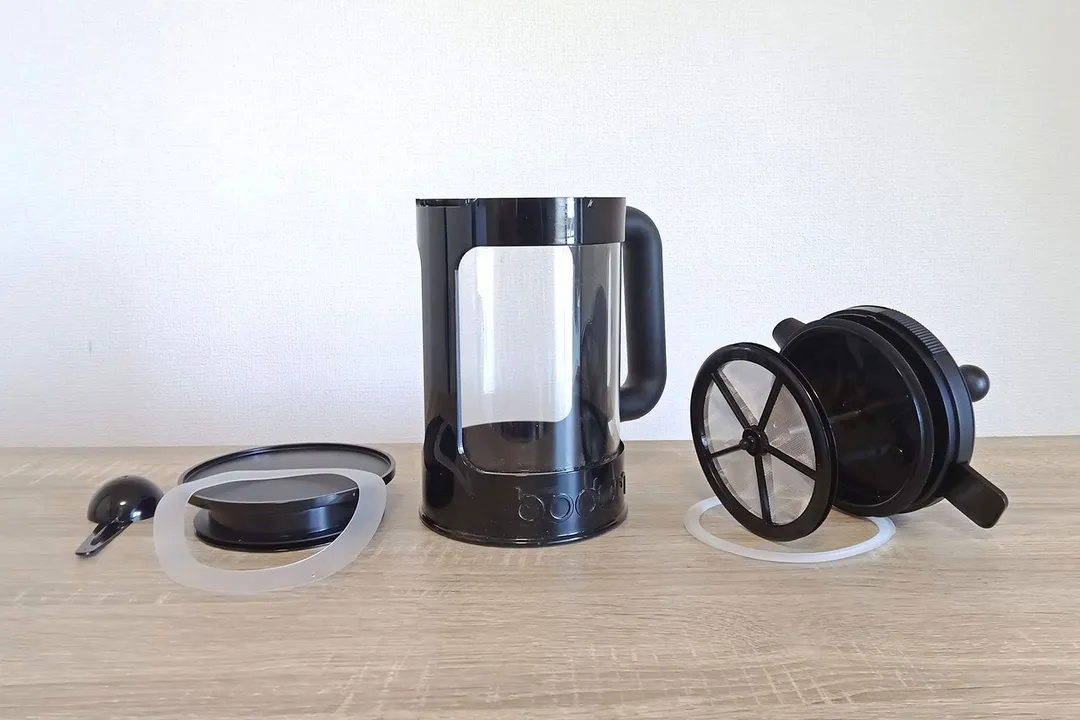
Usability
Brewing
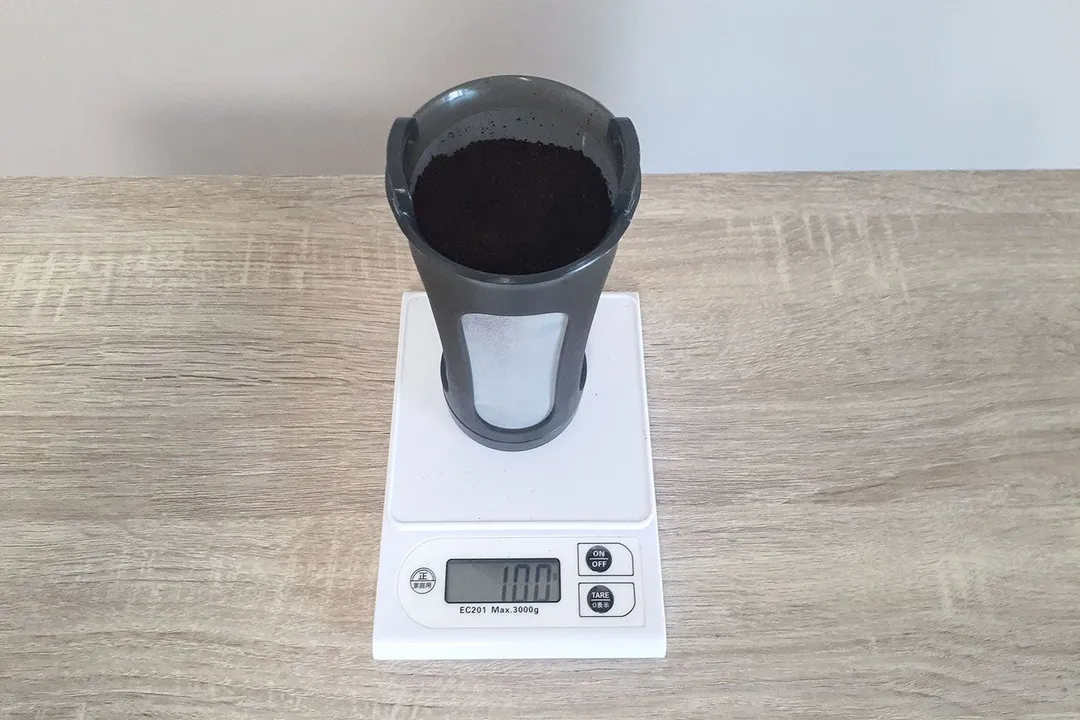
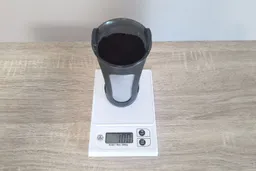
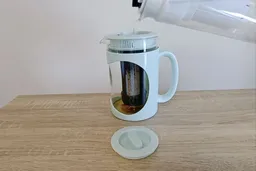
Decanting
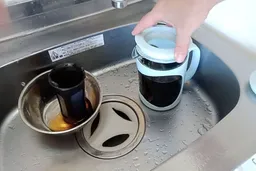
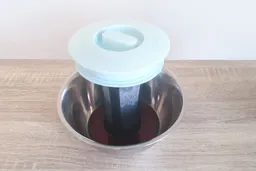
Cleaning and Storage
Behind the Comparison
Roger Shitaki is a writer, author, and editor. His niches are household appliances, health & wellness, and travel. He’s a freelance contributor to a Tokyo lifestyle website and a leading ophthalmology magazine in Asia.

